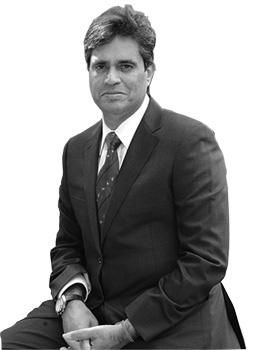Shortly after joining The Legal 500, I attended a training session at Stephenson Harwood in London. Such sessions are organised by law firms to explain the minutiae of a specific topic and help us in our research.
Occasionally, drinks and nibbles follow, giving researchers and lawyers an opportunity to mingle, exchange views on the legal market, gossip about hot topics, and explain how we perform our seemingly black magic of ranking firms. It was at such a gathering I made my way over to Sharon White, the chief executive of Stephenson Harwood. It was the first time I met a woman at the top of an international law firm.
The encounter has stayed with me to this day and significantly increased my awareness of gender representation in law firms. As a senior researcher, I speak to a large number of partners across Europe and the United States to collect more information on their work, the complexities of the cases highlighted to us, motivations behind team changes, and also to gather feedback on the last year’s ranking. Several interviewees, all of them women, have used this opportunity to ask my opinion on the progress law firms are making on gender equality at the partnership level.
A rough analysis of my hundreds of interviews reveals the following results: I speak to more male than female partners overall. I speak to more female partners when researching the UK than I do when researching France, Germany or the US. I speak to more female partners when researching France than I do for Germany. Germany and the US show a similar distribution of male to female interviewees, with male interview partners making up the vast majority of interlocutors.
While these results tie in with my personal impression of female representation in senior roles, they don’t allow for a solid understanding of gender representation in law firms. The roots for this unreliability lie in my editorial allocation: you don’t have to be Nate Silver to baulk at drawing reliable conclusions from a chequered pool of data that contains regional UK research, the French banking sector, and US patent experts. In combination with more trustworthy sources, however, my highly subjective set of experiences transforms into a piece of evidence, albeit one of the circumstantial kind. For several reasons, including my own training as a German lawyer, I’ve decided to look closely at the situation back home.
The German Federal Bar Association’s 2018 statistics show a steady increase in female lawyers since 1970, though women still make up less than half of the total numbers of lawyers in Germany. Women in private practice account for 33.8% of lawyers (in 2017, the figure was 33.7%). In-house, women are in the majority, though not by much. Women lawyers who are qualified as both in-house and external counsel accounted for 43.4% of practitioners, compared to 42.8% in 2017.
Meanwhile, lawyers who have also qualified as notaries, totalled 16.4% female this year, compared to 14.9% in 2017.
These statistics don’t distinguish between the different career steps available in law firms which makes the fact women are still in the minority even more surprising given that considerably more women than men study law in Germany. Recent figures show that out of 114,003 law students, 63,122 were women, an approximate ratio of 55% to 45% in favour of women. It is tempting to explain the considerable difference between the percentage of female law students and female lawyers as a generational issue. The same statistics from the Federal Statistical Office shows women overtook men in law studies only between 2003 and 2004.
The career of a lawyer can be long, often extending beyond the average German retirement age of 61.7 years or even the statutory retirement age of 65. This assumption would still hold when taking into consideration the data for gender distribution in the justice system. According to results published by the Federal Office of Justice in December 2017, 44.4% of judges are women. In the social courts, female judges account for 47.4% of the total judiciary. In all other courts (including the Federal Constitutional Court) the percentage is almost exclusively in the 40% range. The exception is the Federal Patent Court where female judges only account for 24.86% of the judiciary.
It is worth noting that these numbers account not for the number of heads employed, but for the actual contribution in time judges make. Two judges who both work part-time would account for one single unit in this statistic. Considering this, you would be forgiven for asking whether women don’t actually make up the majority, but not in terms of contribution in time. You would, however, also be wrong, at least as far as the Federal Court of Justice is concerned. Data published in February 2018 reveals women are not in the majority in this especially prominent court. The data published for the other ordinary courts also only disclose the numbers in terms of contribution in time.
After private practice and life on the bench, the third big career path for lawyers lies in the civil service, but even the numbers here are so comparatively low that they couldn’t possibly make up for the divergence between female and male law students and female and male lawyers, though they do account for a large number of female law graduates. To draw a long story short: women remain a minority in German law firms, partly because a disproportionately large number choose alternative career paths.
The ratio of female to male lawyers now stands at approximately 1:3. But while the total number of women is of course relevant, it is also worth looking at how present women are across the various hierarchy strata. Do the numbers hold up across the different career steps, from associate to senior associate to counsel and later to salary and equity partner?
One partner at a London law firm recently told me how his firm regularly loses a significant slice of its female senior associate workforce at an age where, statistically, they are most likely to start a family. When asked whether this presented a problem for the firm, he nodded emphatically, elaborating that firms not only put time and money into training, but that clients increasingly look at each firm’s commitment to diversity before choosing external counsel. While the UK does slightly better than Germany when it comes to female partners (just 18% of female equity partners in the UK’s top firms, and an even smaller 10.7% in Germany’s), both countries aren’t models for gender equality in the law. The situation looks particularly dire at the chief executive level.
A simple Google search reveals the following: in the UK, Sharon White is still the chief executive at Stephenson Harwood, while Sonya Leydecker has been joint chief executive at Herbert Smith Freehills since 2014, and Penelope Warne is the senior partner and chairman of the UK board at CMS Cameron McKenna Nabarro Olswang. Meanwhile, in Germany, among the 20 biggest law firms, ranked by lawyer head count, only Constanze Ulmer-Eilfort and Astrid Krüger stand out. Ulmer-Eilfort, who headed the German and Austrian offices of Baker McKenzie from 2012 to 2017, is now a member of the firm’s Global Executive Committee. Astrid Krüger has been managing partner at Allen & Overy since 2016.
Much has been said about why women are underrepresented at the top of the legal totem pole. Analyses tend to emphasise how many law firms now offer advanced programmes to foster a culture of inclusion and diversity, often specifically tailored to women. Milbank, which has the highest starting salary in the German market, established the Milbank Female Summit, in 2017; it offers trainees an opportunity to talk to partners and associates who are experts from specialisms with a notoriously low percentage of female lawyers, including mergers and acquisitions, antitrust, finance and stock corporation law. Elsewhere, Hogan Lovells has committed to a national diversity charter and uses its Women@Hogan Lovells programme to attract and retain female talent. And in August 2018, the firm’s Munich office opened a child care facility, making it the first major law firm in Germany to do so. Bird & Bird’s efforts combine under its Ladies@Bird initiative and in 2016 the firm launched a Global Women’s Development Programme as part of its wider gender strategy.
Approaches clearly vary from firm to firm, some preferring a focus on economic topics while others seek to establish a visible proximity to outside frameworks, such as the Charta der Vielfalt or Diversity Charter, established by four multinationals in 2006 and has now grown to over 2,200 signatories. In addition to the efforts made by law firms themselves, other organisations are also ploughing the fields of gender equality. Among the most established ones is The German Women Lawyers Association which was established in 1948 and sees itself as the successor of the German Women Lawyers Society, founded in 1914 to promote the admission of women to legal professions. The Female Lawyer Working Group, founded in 2004, is one of many active under the roof of the German Bar Association. And yet the numbers of women are still staggeringly low, especially at the top of the profession.
Why is that? In conversations with lawyers, the response has been both uniform and varied. Uniform in that women can definitely make it to partner provided they don’t have any career interruptions and put in the required hours. Varied in that the reasons for the underrepresentation, especially at senior level, are viewed through different lenses. Some point out that in spite of all the charters, commitments, and initiatives, law firm cultures are slow to change and that not only are women viewed as less reliable because they are the gender biologically responsible for growing babies, but that men are still often expected not to play a significant role during the early years of their children.
Anecdotally, one lawyer mentioned a male colleague who had approached his managing partner about taking parental leave, a possibility for parents to split the total 36 months between them. His request was met with surprise and the question of why he didn’t have a wife to take care of the child. Some claim women are often the parent more willing to stay at home and accept the career-hindering consequences this decision often entails. However, some firms are aiming to change this.
Such changes can be sorted into two categories: some explicitly aim at changing the culture within, providing options for their male and female employees which includes more working from home and full-time flex-time as core elements of a broader approach. Other firms prefer an exclusive focus on women, tailoring their initiatives to help female lawyers navigate a culture still dominated by men. While the former model is criticised for making adjustments when the real problem, supposedly, is the women who are simply not as eager to rise to partner level, the latter model is under fire for being too cautious, with critics pointing out that firms still largely measure success in terms of billable hours which makes raising a family difficult, particularly
for women.
Biological differences aside, psychological factors play an important role in how women and men approach their careers. Traditionally, women were exclusively in charge of child care and the home, while men were the bread winners. There is a small difference here between the formerly distinct parts of West Germany and the German Democratic Republic where a much higher percentage of women were active members of the workforce, but this has done little to change the overall perception of work distribution within families.
Keeping women in law and having them progress to partner level is both important for the women themselves, for the families they may have, and also for firms. The high salaries large firms pay first-year associates are likely to increase further and partners already spend time training the next generation of firm talent. Losing young lawyers after a few years is a significant financial loss (not to mention the income those leaving could have generated had they stayed). On top of this already considerable loss, firms with a lack of female lawyers in senior positions face losing an instruction because they don’t meet their clients’ diversity criteria or because they stick to traditional billing models. The increasing presence of female GCs places firms under further pressure as clients are more likely to be aware of diversity issues when the GC at the helm has been confronted with structural career obstacles themselves.
However, a lack of diversity is not yet a deal breaker, according to a study of 31 international companies undertaken by Bucerius Education. The research concluded that the majority of the GCs involved considered gender diversity an important topic for their company, with female GCs attaching greater importance to the subject than their male counterparts. However, in 2015 a little less than one-third of companies claimed to include gender diversity at partner level as a criterion in their choice of law firm. The numbers shifted slightly when the GCs were asked whether gender diversity becomes a criterion in regard to the specific legal team: 36% of GCs claimed gender diversity within the team assigned to a project played a role in choosing a law firm.
The numbers between men and women diverge more for this second question: the percentage of men not considering gender diversity, either within the partnership or within a team assigned for a project, stayed at 78%, yet the percentage of female GCs who consider gender diversity in their choice of external legal provider increased from 36% to 47%.
Given the results of this one study, in-house counsel, at least in 2015, weren’t the main drivers behind gender diversity initiatives. But combined with the data available from the German Federal Bar Association it seems likely that pressure from the in-house community will increase over time, creating an extremely powerful driver for change and, ultimately and hopefully, me less surprised when shaking hands with a female chief executive.






